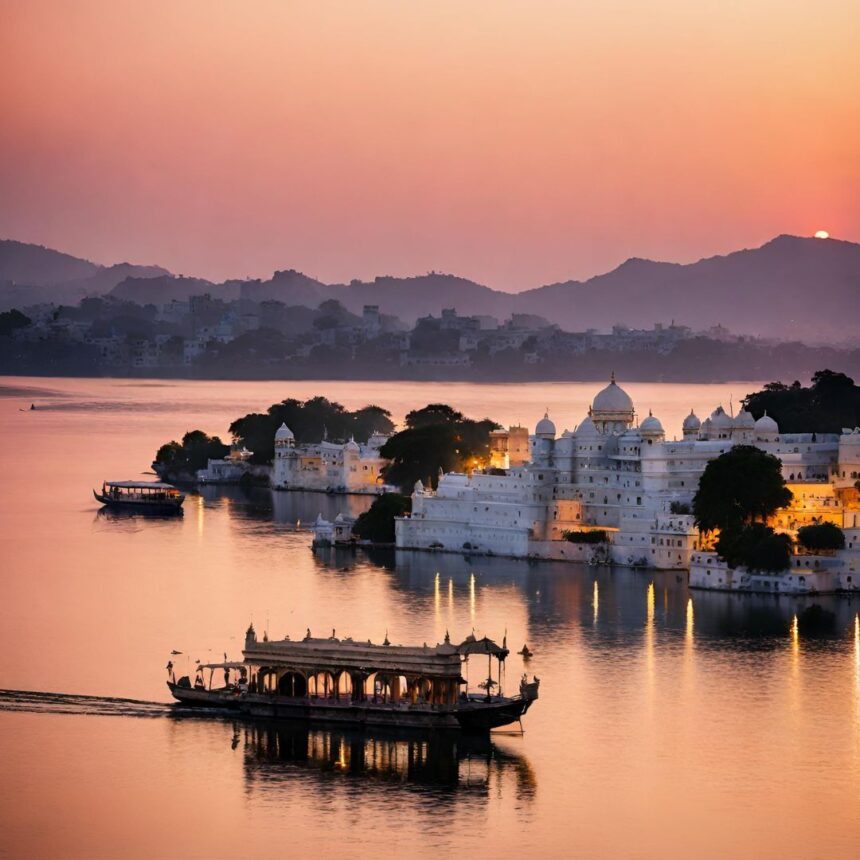Stunning Facts About Udaipur That Will Amaze You
Known as the “City of Lakes,” Udaipur in Rajasthan is a captivating blend of royal heritage, scenic landscapes, and vibrant culture. Renowned for its majestic palaces, serene lakes, and colorful festivals, Udaipur offers travelers a glimpse into India’s regal past while providing modern comforts and unforgettable experiences. Beyond its visual appeal, Udaipur has a fascinating history, cultural significance, and daily life impacts that make it a remarkable city for residents and visitors alike.
In this article, we explore Udaipur’s history, essential facts, timeline, significance, FAQs, cultural and societal impact, observances, and inspirational insights, presented in a human-friendly style.
History of Udaipur
Udaipur’s history is a tale of valor, royalty, and culture:
Founding: Udaipur was founded in 1559 by Maharana Udai Singh II, the ruler of Mewar, after his previous capital Chittorgarh fell to invaders.
Royal Heritage: The city became the seat of the Mewar dynasty, known for its brave Rajput rulers and strategic diplomacy.
Architectural Marvels: Over centuries, Udaipur’s rulers built grand palaces, temples, and havelis, reflecting Rajput architecture and artistic brilliance.
British Era: Udaipur maintained its royal autonomy under British India while embracing selective modernization.
Post-Independence: The city evolved as a cultural and tourist hub while preserving its royal legacy.
Key Facts About Udaipur
Lakes and Waterways: Udaipur is home to 16 lakes, including the famous Lake Pichola, Fateh Sagar Lake, and Udai Sagar, earning it the nickname “City of Lakes.”
Royal Palaces: The City Palace, Jag Mandir, and Monsoon Palace are iconic symbols of Udaipur’s regal history.
Temples and Spiritual Sites: Jagdish Temple, Eklingji, and Shrinathji Temple highlight the city’s spiritual heritage.
Cultural Festivals: Mewar Festival, Gangaur, and Diwali celebrations showcase vibrant Rajasthani traditions.
Tourism Economy: Hospitality, guided tours, heritage hotels, and local crafts contribute significantly to Udaipur’s economy.
Handicrafts and Art: Miniature paintings, traditional jewelry, textiles, and pottery are integral to Udaipur’s artistic identity.
Cuisine: Rajasthani cuisine, including dal-baati-churma, gatte ki sabzi, and traditional sweets, reflects local culinary heritage.
Cinematic Appeal: Udaipur’s scenic beauty has made it a favorite location for Bollywood and international films.
Education and Heritage Preservation: Institutions and museums preserve history, art, and cultural narratives for future generations.
Timeline of Udaipur
1559: Maharana Udai Singh II founds Udaipur after Chittorgarh’s fall.
1567: Construction of the City Palace begins, showcasing architectural grandeur.
17th–18th Century: Expansion of palaces, lakes, and temples; Udaipur becomes a cultural hub.
19th Century: City integrates selective modernity under British influence while retaining royal identity.
1947: India gains independence; Udaipur’s royal family plays a role in cultural preservation.
Late 20th Century: Rise of heritage tourism, luxury hotels, and cultural festivals.
21st Century: Udaipur balances tourism, modernization, and heritage conservation.
Significance of Udaipur
Tourism Significance: Udaipur attracts millions of domestic and international visitors annually, supporting local businesses and hospitality.
Cultural Significance: The city preserves Rajput traditions, arts, and festivals, contributing to India’s cultural tapestry.
Architectural Importance: Palaces, temples, and havelis showcase craftsmanship and historical narratives.
Economic Impact: Tourism, crafts, and hospitality sectors generate substantial employment and revenue.
Environmental Awareness: Lakes and green spaces promote eco-tourism and environmental responsibility.
Daily Life Impacts
Employment Opportunities: Tourism, hospitality, local handicrafts, and guided tours provide livelihoods.
Urban Development: Infrastructure improvements in roads, healthcare, and connectivity enhance daily life for residents.
Cultural Engagement: Festivals and local events encourage community participation and social interaction.
Environmental Responsibility: Initiatives for lake preservation and waste management impact daily routines positively.
Education and Art: Schools, museums, and cultural institutions foster intellectual growth and heritage awareness.
Observance and Important Points
Respect Heritage Sites: Follow rules in palaces, temples, and havelis to preserve history.
Cultural Etiquette: Dress modestly, particularly in temples and religious areas.
Eco-Friendly Tourism: Avoid littering, conserve water, and support sustainable practices.
Support Local Economy: Purchase handicrafts, textiles, and local food to benefit artisans and small businesses.
Participate in Festivals: Engage in Mewar Festival, Gangaur, and Diwali for a cultural immersion experience.
FAQs About Udaipur
Q1: What is the best time to visit Udaipur?
A: October to March is ideal, with mild weather and pleasant sightseeing conditions.
Q2: How do I reach Udaipur?
A: Udaipur is well-connected by road, rail, and has Maharana Pratap Airport for domestic flights.
Q3: What are must-visit attractions?
A: City Palace, Lake Pichola, Jag Mandir, Fateh Sagar Lake, Saheliyon Ki Bari, and Monsoon Palace.
Q4: Is Udaipur suitable for families?
A: Yes, with safe sightseeing spots, heritage hotels, cultural events, and recreational activities.
Q5: How many days are recommended for exploring Udaipur?
A: A 3–4 day trip allows exploration of major attractions and cultural experiences.
Social and Cultural Significance
Heritage Preservation: Udaipur maintains palaces, temples, and art forms that narrate centuries of history.
Community Engagement: Festivals, fairs, and cultural programs foster social cohesion.
Environmental Awareness: Lake conservation and green initiatives promote eco-conscious tourism.
Cultural Exchange: Interaction with tourists encourages mutual understanding and appreciation of global diversity.
Educational Value: Museums, schools, and workshops ensure the transmission of traditional knowledge and artistic skills.
Wishing and Inspirational Perspective
Udaipur inspires:
Peace and Reflection: Serene lakes, gardens, and palaces encourage mindfulness and relaxation.
Creativity and Art: Artists, photographers, and writers find inspiration in Udaipur’s scenic beauty.
Royal Elegance: The city teaches respect for heritage, architecture, and historical narratives.
Adventure and Exploration: Boating, trekking, and cultural tours stimulate curiosity and courage.
Community and Respect: Engaging with locals fosters social harmony, empathy, and cultural awareness.
Conclusion: Importance in Daily Life and Society
Udaipur is more than just a tourist destination; it is a living heritage city, combining history, architecture, art, culture, and natural beauty. Its influence on daily life includes employment, education, tourism-driven income, and environmental consciousness. Socially, it fosters community engagement, cultural preservation, and cross-cultural understanding.
The 9 stunning facts about Udaipur illustrate why it continues to enchant travelers from around the world. From shimmering lakes to majestic palaces, vibrant festivals, and rich culinary traditions, Udaipur embodies the harmony of history, culture, and human experience. By understanding and respecting Udaipur’s heritage, visitors contribute to sustainable tourism, societal growth, and meaningful cultural exchange.








